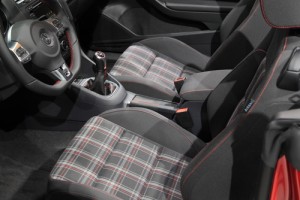 If you’re a baseball purist, you probably hate the designated hitter. A music purist likely prefers vinyl. As for the automotive purist, there’s an affinity for the manual transmission. However, year after year, it’s getting tougher for the automotive purist to find the stick shift that connects them to their car.
If you’re a baseball purist, you probably hate the designated hitter. A music purist likely prefers vinyl. As for the automotive purist, there’s an affinity for the manual transmission. However, year after year, it’s getting tougher for the automotive purist to find the stick shift that connects them to their car.
According to U.S. News, the number of cars that offer a manual transmission has dropped from 25% to under 3% in the last 20 years. Why has this been the trend? Both Road and Track and fix.com have recently looked the reasons behind carmakers putting all their eggs in the automatic basket. The two main reasons behind the move to the automatic are that they are easier to drive and the fuel efficiency of the automatic has greatly improved.
Manual transmissions used to be far more fuel efficient than automatic transmissions. But, as the popularity has increased in the automatic, the fuel efficiency has improved. Within the last three years, three different cars that offer both manual and automatic models show that their automatic models are within one mile per gallon of their manual models.
That means convenience in driving moves to the forefront, and the automatic transmission takes the advantage because it is just plain easier to drive. Manual transmissions take effort to learn how to drive, and anyone who has ever driven a stick shift knows all too well of the feeling when you let the clutch out too quickly, the car lurches and you’re sitting at a green light hoping no one saw it while you restart the car.
In their look at the shift in shifting, fix.com notes that the drop in cars manufactured with a manual transmission, naturally corresponds with a drop in the percentage of cars sold with a manual transmission.

Graphic source: fix.com
In fact, the move towards the automatic transmission has been so widespread that the manual transmission has actually proven to be a theft deterrent. On at least one occasion, an attempted carjacking came to a literal and figurative halt when the would-be carjacker couldn’t drive a stick.
In spite of the popularity wave of the automatic transmission, don’t think for a second that the manual transmission purist is about to fade away. There is no shortage of articles, columns, and blogs touting the benefits of the manual transmission.
The automotive blog site jalopnik.com has a few great contributions to why the manual transmission is not going extinct. “The manual transmission has become one of things we hold dear to our hearts, not because it is technically superior, but because for us it’s just right” is the opinion of Vincente Esteve on oppositelock. Esteve touts the point of view that driving a manual transmission just feels better to him than an automatic does. Esteve, who drives a Volkswagen, notes that makers of manual transmission vehicles have made it a point to insure that things like a lighter, smoother clutch have helped increase the ease of driving a stick.
Esteve isn’t the only one. Other writers have noted that driving with a manual transmission keeps the driver more engaged with what they’re doing, gives them a better feel for the road, and reduces distractions (you can’t text and shift simultaneously). There’s also the matter of cost, as the manual transmission tends to be less expensive than its automatic counterpart.
Volkswagen’s GTI remains one of the favorites among the automotive purists. For the last decade, the GTI has been offered as either a manual transmission or without the third pedal as a dual clutch or DSG (direct shift gearbox). In that time, the popularity of the manual GTI has not dropped off versus the DSG. In fact, just two years ago, the number of GTI’s sold with a manual transmission was about 500 over the average for the last thirty years.
If you want to get away from the car and look at the driver (and have a little fun), another blog at jalopnik.com contrasts the demographics of manual drivers versus automatic drivers and they cite some pretty extensive research done by hunch.com:

Graphic source: hunch.com


![[Facebook]](https://www.southpointvw.com/blogs/1057/wp-content/plugins/bookmarkify/facebook.png)
![[LinkedIn]](https://www.southpointvw.com/blogs/1057/wp-content/plugins/bookmarkify/linkedin.png)
![[Twitter]](https://www.southpointvw.com/blogs/1057/wp-content/plugins/bookmarkify/twitter.png)
![[Yahoo!]](https://www.southpointvw.com/blogs/1057/wp-content/plugins/bookmarkify/yahoo.png)
![[Email]](https://www.southpointvw.com/blogs/1057/wp-content/plugins/bookmarkify/email.png)
